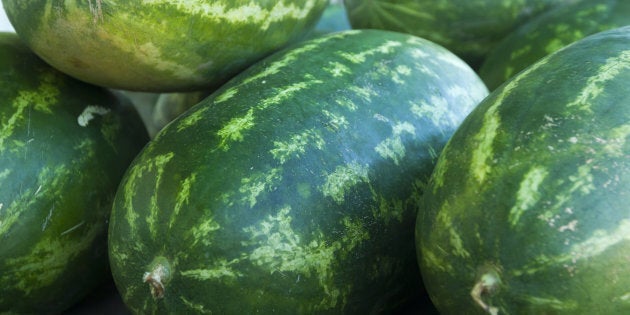
Purchasing a watermelon is kind of a risky investment. It's usually giant, so you're really committing to a lot of fruit. And the thick green rind protecting the pink flesh means there's no easy way to know how good the fruit is inside. Or is there?
If you know what to look for, you can be sure of a watermelon's readiness before cracking it open. Here's what you need to know:
Look for the spot. The telltale sign that a watermelon is ready to be sliced open is the spot. A good watermelon will have a pale yellow spot on the rind, indicating that it was left on the ground to ripen in the sun. If there's no yellowish marking, be wary.
Make sure it's heavy. Another sign you've got a good melon on your hands is the weight. If you pick up the watermelon and it feels really heavy -- heavier than it looks -- you've hit the jackpot. The heavier the melon, the better it is.
Knock on it. Sure, you might get a little side eye from other grocery store shoppers, but give the melon a listen for a final test. Gently knock on the watermelon and listen for a hollow sound that makes a "plunk" rather than a "thwack" sound.
If a watermelon passes those three tests, you've found yourself one worthy of your next summer barbecue. Or these salad recipes. OR these cocktails. Either way, buy the watermelon.